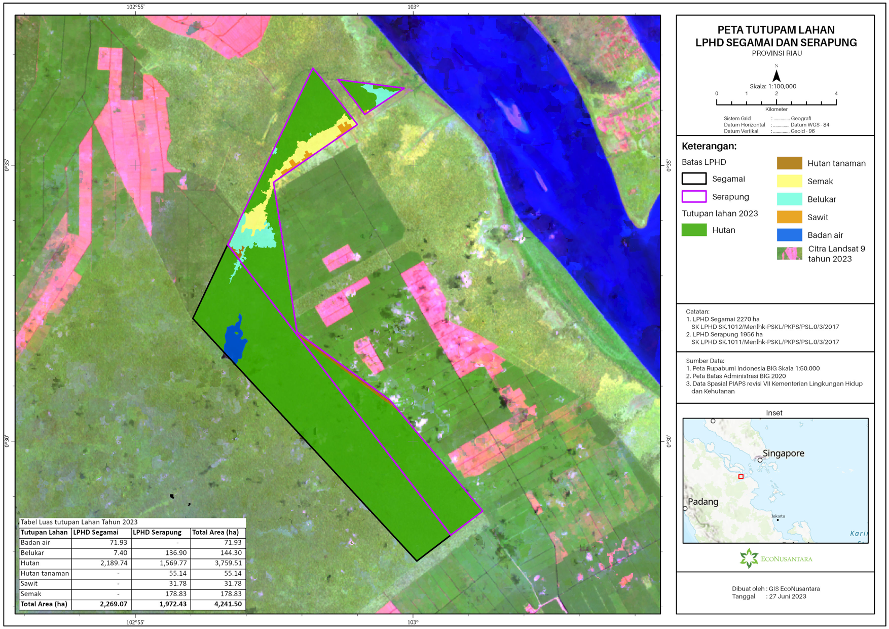Download the Full Content in Indonesian:
![]()
Carbon storage is one option that can be used to reduce carbon in the atmosphere to reduce the concentration of greenhouse gases which can increase the earth’s surface temperature or climate change. Plants carry out the process of photosynthesis by absorbing CO2 from the air and converting it into carbohydrates, which are then distributed and stored throughout all parts of the plant, including leaves, stems, twigs, flowers and fruit. The process of storing C in living plant parts is called carbon sequestration (Rosalina 2013). To calculate C uptake in plants, it can be done by measuring biomass. Plant biomass in a certain unit area can describe the amount of CO2 absorbed in the atmosphere.
Forest carbon stocks are defined as the amount of carbon contained in forests. In forest carbon inventory, the carbon pool that is taken into account is at least 4 carbon pools, namely: (a) above-surface biomass, (b) below-surface biomass, (c) dead organic matter, and (d) soil organic carbon (Sutaryo 2009). There are 4 main ways to calculate biomass, namely, (a) sampling with harvesting (Destructive sampling) in situ, (b) sampling without harvesting (Non-destructive sampling) with forest data collection in situ, (c) estimation via remote sensing , and (d) model building.
This study aims to calculate the potential for carbon stocks and uptake in the Segamai Village Forest area (2269.07 ha) and Serapung (1972.43 ha) by utilizing remote sensing technology. The initial stage of this process is to map the land cover in the study area. Based on the results of land cover analysis using Landsat 9 and Sentinel 2 imagery in 2023, information was obtained that the forested area in the Segamai HD is 2189.74 and the Serapung HD is 1596.77 ha (Figure 1)

Figure 1. Potential Stock and Carbon Uptake in the Segamai Serapung Village Forest


